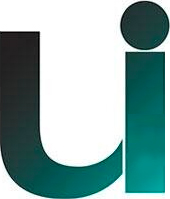As Unity Health Network continues its move toward becoming a fully value-based care organization, company leaders realized one of their key actions must be to assume greater care management responsibilities to better control the clinical and financial risk associated with high-risk patients. Patients with complicated health (and often accompanying social) conditions are at risk for poor health outcomes, inadequate quality of care, and increased costs. Thus Unity Health Network designed and initiated a process of managing the care of high-risk patients, using a number of tools that could be deployed in a supportive one-on-one environment to assist the organization in achieving three goals: delivery of the right care at the right time and at the right place.
The first step was to identify high-risk patients, and better understand the number and complexity of this patient pool. Using data analytics and selection criteria tied to chronic conditions and quality targets, Unity Health Network discovered that approximately 3-5% of its primary care physician’s patient lives could be identified as high-risk.
Concurrently, while the organization was getting their hands around the data, it began structuring a team of care providers and a process that would best serve the patients in need. The High Risk Care Management team includes a physician, Dr. Brennan David Kruszewski, who provides oversight to the work of RNs, medical assistants and a clinical nurse specialist specifically working with the program.
After the team was put in place and patients were identified as high risk, the High Risk Care Management program began to enroll patients through a number of paths. First, going back to the data, a patient is identified as possessing the characteristics needed for participation. That information is then vetted by the program’s nursing staff to ensure the patient is indeed a good candidate. Once the team feels comfortable with enrolling the patient, a letter is sent introducing and explaining the program, followed by a phone call to hopefully encourage the patient to enroll.
A second way to be enrolled is by a direct referral from the patient’s primary care provider. Unity Health Network’s primary care team are the closest to the patient population and can quickly determine if a patient not only fits the criteria but also has the personality to be a successful participant.
A third and final way patients may become enrolled in the High Risk Care Management program is while as an inpatient at a regional hospital. Both Dr. Kruszewski and the program’s CNP round at two hospitals in the Akron, Ohio area, and have the opportunity to identify those patients that may benefit from participating in the High Risk Care Management program.
Once a patient has agreed to participate, a home visit is scheduled and fulfilled by one of the program’s nurses. At this meeting, the nurse does a total health and home assessment, closely detailing the patient’s health history, current conditions, goals, lifestyle factors and environment. The patient is also provided a comprehensive description of the program, Unity Health Network’s goals with the patient, initiatives and activities to expect and a preliminary schedule of follow-up visits and calls. The care plan is specific to each patient’s individual needs, and that is where the power of the High Risk Care Management program comes to bear. A values-based approach does not allow for “cookie-cutter” care – it must look for the gaps that have led to or are exacerbating current conditions, and work to provide care to stop or reverse the negative effects. By doing this, Unity Health Network has begun its earnest commitment to a quality-based care approach.
Though care plans are individualized, all rely on an educational focus that builds the patient’s self-management skills. Ensuring patients understand the necessity of self-management between appointments, and using tools and technology (such as text reminders and emails) to reinforce this activity, Unity health Network has been able to reduce the risk of patient escalation and avoidable acute care utilization. The organization has also implemented newer technologies to promote more technology based care such as Bluetooth enabled devices that interact with our EHR system sending information directly to providers.
Additionally, Unity Health Network has begun to explore utilization of broader community resources to help patients adhere to the goals of the program. Transportation, physical activity and behavioral health needs can be supported through partnerships with other healthcare providers and civic and non-profit organizations in our region. Unity Health Network looks forward to growing the adherence to the program with these resources.
Patients are able to graduate out of the program, which is a very positive experience for them and the care team. Not only has their quality of life improved, but they are also experiencing reduced costs and increased satisfaction with their healthcare. Organizationally, the High Risk Care Management program is becoming more successful than planned, and it has had an overwhelmingly positive impact on reducing healthcare costs and readmissions to hospitals as well as improving provider satisfaction. Caring for complex high risk patients can be overwhelming in a busy office setting when providers have minimal time and resources; however, Unity Health Network is proud to have developed a High Risk Care Management approach to help not only its patients but also its providers and staff.
Read about the success of the High Risk Care Management program in Cleveland Magazine here.
